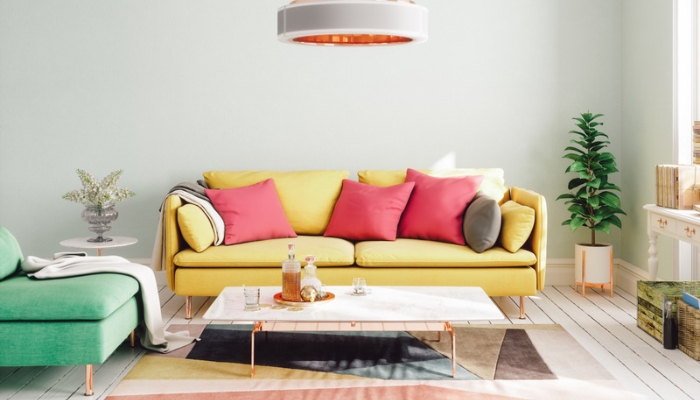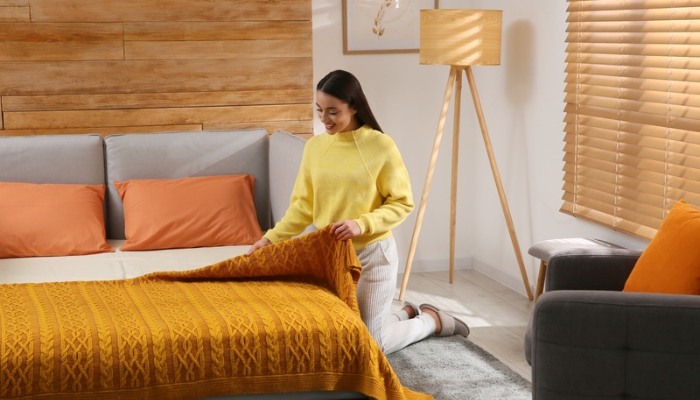Shopping for furniture can feel like solving a puzzle, can't it? Each piece you select needs to fit your space perfectly, reflect your style, and meet your needs – not to mention it has to fit into your budget. So, where do you start? By asking the right questions, you can simplify your furniture shopping journey and turn that daunting puzzle into an enjoyable treasure hunt. Before you step on the showroom floor, there are five questions to ask yourself, but the answers will help you find the perfect pieces!
1. What is Your Budget?

Let's chat about the elephant in the room: your budget. It might not be the most exciting part of the furniture shopping experience, but it's arguably one of the most essential steps. Let's break it down.
Imagine strolling through a furniture store, and there it is – the perfect sofa. It's plush, stylish, and just screaming for a Netflix marathon. But then, your eyes slide to the price tag, and suddenly, that dream sofa seems a tad out of reach. We've all been there, and it's no fun.
A clear budget can save you from these little heartbreaks and keep your bank account happy. It also helps narrow down your options, which is a big help in the wide world of furniture shopping.
PRO-TIP: Categorize your budget into "Investment Pieces" and "Change Artists."
- Investment Pieces: These are your big-ticket items like sofas or beds. You'll be using these the most, and they've got to stand the test of time. Quality often comes with a price tag, so allocating a more significant portion of your budget here is a smart move.
- Change Artists: These are items like side tables, lamps, or throw pillows. They can be easily swapped out when you want to shake things up. So, consider saving on these and go for more budget-friendly options.
Also, don't forget to factor in additional costs – like delivery, assembly, and warranties. It's always better to keep a buffer for these unexpected expenses.
Setting a budget might not sound like a blast, but it definitely makes your furniture shopping spree smoother and, let's be honest, a little more thrilling. Who doesn't love the challenge of finding the perfect piece that's also perfect for your wallet?
2. What's Your Space Like?
The next stop on our furniture shopping journey: your space. Knowing your rooms' dimensions and overall layout is critical when selecting furniture. You'd be surprised how often people forget to bring their room measurements when they head to the furniture store!
- Measure Everything: Not just the room, but also the doorways, stairways, or any tight corners. Also, consider the placement of windows, radiators, or other fixed elements in the room that could influence furniture placement.
- Create a Floor Plan: To help visualize the room, sketch a floor plan on paper or use an online tool. With a floor plan, you can check whether that new armchair will block the walkway or if the coffee table is proportionate to the sofa.
- Consider Function: Is the room you're furnishing a busy family living room or a peaceful bedroom retreat? Consider the flow of movement, available storage, and the room's comfort level.
Getting to know your space helps to ensure that your new furniture not only fits physically but also harmoniously blends with your lifestyle and needs.
3. What's Your Color Scheme?

Choosing furniture isn't just about picking a comfortable couch or a sturdy table; it's also a creative process where colors play a pivotal role. The color scheme you choose can make your room appear larger, smaller, brighter, or more subdued and can even influence your mood.
Begin with the Basics
If you need help figuring out where to start, consider your room's existing color scheme. What color are the walls, floors, and other large pieces of furniture? If your room is primarily neutral, add a splash of color with vibrant furniture. On the other hand, if your room already has strong colors, a neutral piece could provide a calming balance.
Consider the Mood
Colors can evoke different emotions and moods. Light, cool colors can create a peaceful, calming atmosphere, while bold, warm colors can make a space feel cozy and inviting. Think about the mood you want to create in your room and choose your furniture colors accordingly.
Coordinating vs. Complementing
Remember, your furniture doesn't need to match your color scheme exactly. It's more about coordinating or complementing colors. A blue couch might disappear into the décor if you have a blue room, while a yellow couch could provide a delightful contrast.
Mix and Match with Confidence
Lastly, don't be afraid to mix and match. Combining different colors, patterns, and textures can make your space uniquely yours if your style leans more toward eclecticism. Just remember to tie it all together with some form of color repetition or coordination.
Selecting the right colors for your furniture can bring your room to life and reflect your personal style.
4. What's Your Style?
Choosing the right furniture for your home is about more than just function and durability; it's also a profound way to express your personal style. Your furniture tells a story about who you are and what you love, so selecting pieces that genuinely resonate with you is essential.
The first step in determining your style is understanding your preferences. Do you lean more toward traditional or contemporary furniture? Does Scandinavian design's sleek and minimalist appeal attract you, or were you considering redecorating every time you saw an episode of Fixer Upper?
Let's break down some popular furniture styles that might align with your tastes:
- Modern: Characterized by clean lines, minimalist design, and neutral color palettes, modern-style furniture is all about simplicity and functionality.
- Traditional: Traditional furniture features intricate details, dark wood tones, and rich, warm colors. It's a great choice if you love timeless elegance and an old-world aesthetic.
- Bohemian: Eclectic and artistic, the Bohemian style embraces vibrant colors, unique patterns, and a mix of antique and modern furniture for a carefree, relaxed vibe.
- Industrial: Industrial style showcases raw, unfinished elements such as exposed brick, metal, and wood. Think loft-style living and old factories turned into homes.
- Scandinavian: The Scandinavian style features simplicity, minimalism, and functionality, featuring light colors, natural materials, and clean lines.
Remember, you're not limited to just one style. Feel free to mix and match different styles to create a unique look that's all your own!
5. What's the Furniture's Function?
When choosing new furniture, it's crucial to consider its intended purpose in your home. The functionality of the furniture can heavily influence the type, size, material, and even color of the pieces you choose. Let's look at some situations where the function could dictate the form of your furniture.

Multifunctional Spaces
Does the room your furnishing wears many hats? If your family room also moonlights as a guest room, it might be a good idea to consider a sleeper sofa or a daybed. They offer a comfortable place to sit during the day, and when you have guests over, they quickly transform into a cozy bed.
Or if you have a small living room that also needs to provide storage, consider dual-purpose pieces. An ottoman or coffee table with storage can be a lifesaver. It's a place to rest your feet or coffee cup and a hidden spot to stash blankets, books, or games.
Consider Who Will Be Using the Furniture
Take into account who will be using the room. If you have kids, a sturdy table with rounded corners could be safer than a glass coffee table with sharp edges. And think about fabric choices - a light-colored suede couch might look amazing in the showroom, but if you've got toddlers or pets at home, it won't look fantastic for long!
Choosing furniture for a pet-friendly home? Look for pieces in pet-friendly fabrics like microfiber, which are more resistant to stains and scratches.
In essence, understanding the function of your furniture will guide you in your shopping adventure, helping you choose pieces that look great and fit seamlessly into your lifestyle. That way, you create a space that's beautiful, comfortable, and practical.
Shopping for furniture isn't just about aesthetics - although that's definitely a fun part! It's about finding the pieces that serve your needs, fit your budget, match your style, and work within your space. By asking yourself these critical questions during your furniture shopping journey, you're taking a mindful approach to designing your space. This way, you're not just filling your rooms with pretty pieces but curating a home that truly reflects your life and needs. And if you need help finding the answers to your questions or still need help figuring out where to start, we're here to help.
